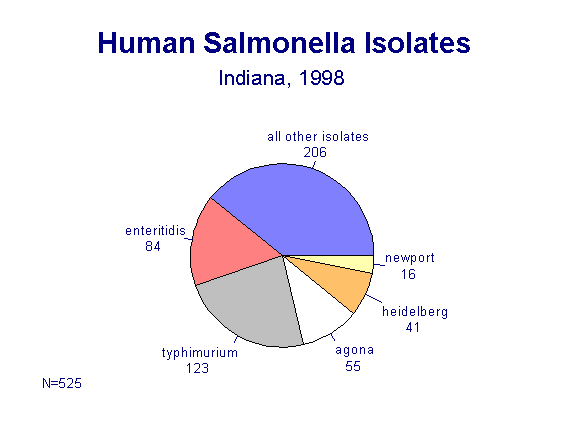
SALMONELLOSIS
Cases = 649
Crude rate (per 100,000 population) = 11.7
Age-adjusted race-specific rates (per 100,000
population)
White = 6.0
Nonwhite = 6.4
Gender-specific rates (per 100,000 population)
Female = 11.0
Male = 9.3
Salmonellosis is a bacterial disease usually transmitted through raw or undercooked foods
of animal origin or foods cross contaminated by animal products or feces. It can also be
transmitted person-to-person.
There are over 2300 different Salmonella serotypes that differ in somatic and flagellar antigens. The ISDH requests that clinical laboratories submit all positive Salmonella isolates to the ISDH Disease Control Laboratory for free confirmation and serotyping. During 1998, serotype was determined for 81% of the reported Salmonella cases. Figure 1 shows the distribution of Salmonella serotypes from initial and reference specimens submitted to ISDH Enterics Laboratory. Of the 525 Salmonella isolates of known serotype, 123 (23%) were typhimurium, 84 (16%) were enteritidis, 55 (10%) were agona, 41 (8%) were heidelberg, 16 (3%) were newport, and the remaining 206 (39%) were other serotypes.
Figure 1.

Incidence of salmonellosis in Indiana increased slightly with 649 cases being reported (Figure 2). The incidence was greatest during the late spring and summer months (Figure 3).
Figure 2.
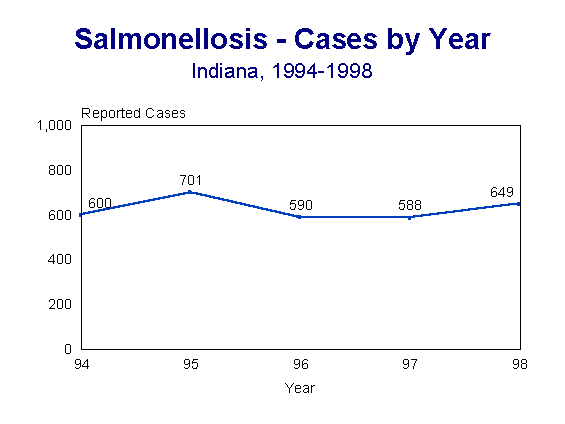
Figure 3.
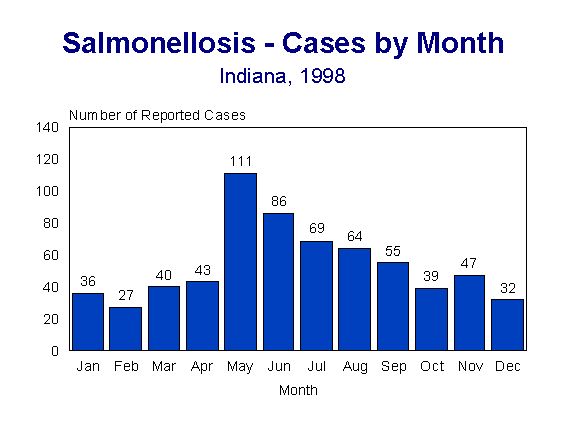
There was little difference in the rates of salmonellosis by race or sex. Overall age-specific rates were greatest among infants (50.7) followed by preschoolers (20.1) (Figure 4).
Figure 4.
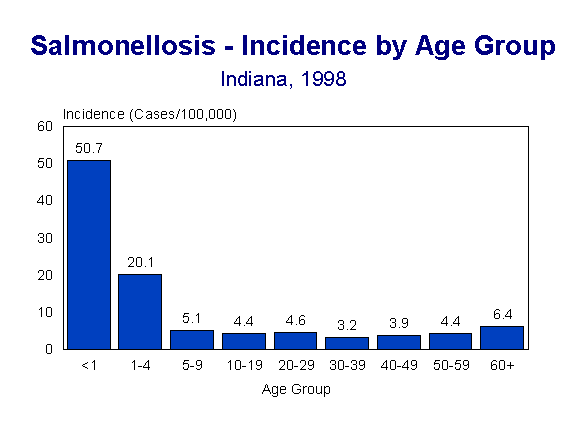
Among counties with at least 5 reported cases, crude incidence rates of salmonellosis were greatest in Parke (32.5), Adams (28.9), Lawrence (22.7), and Warrick (22.3) counties (Figure 5).
Figure 5. Salmonellosis Incidence Rate by County
(among counties with > 5 reported cases)
Indiana, 1998
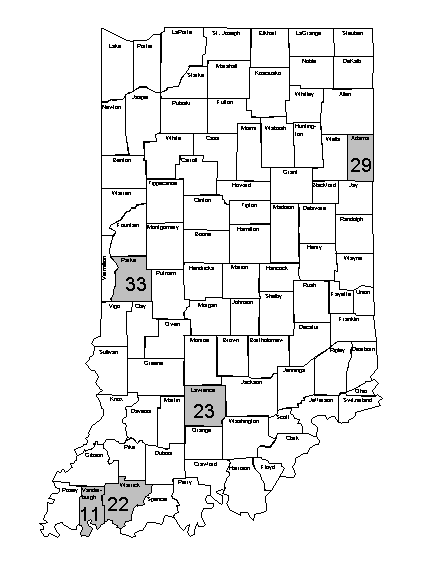
Two outbreaks of salmonellosis were reported in 1998. In May-June, 55 cases of Salmonella agona were reported in Indiana. The cases were part of a nationwide outbreak attributed to contaminated toasted oats cereal. In May, 12 cases of Salmonella braenderup were linked to a Parke County restaurant. These outbreaks are described in more detail in Appendix D.
In response to increasing numbers of multi-drug resistant Salmonella typhimurium DT104 in Europe and parts of the US, the ISDH Disease Control Laboratory began screening all S. typhimurium isolates for resistance to those antibiotics for which the European DT104 strain commonly shows resistance. These included ampicillin, chloramphenicol, streptomycin, sulfonamides, and tetracycline (R-type: ACSSuT). Of the 123 S. typhimurium isolates examined, 72 (25%) of the isolates were R-type: ACSSuT (See Figure 6).
Figure 6. Cases of Salmonella typhimurium
R-type ACSSuT by County
Indiana, 1998
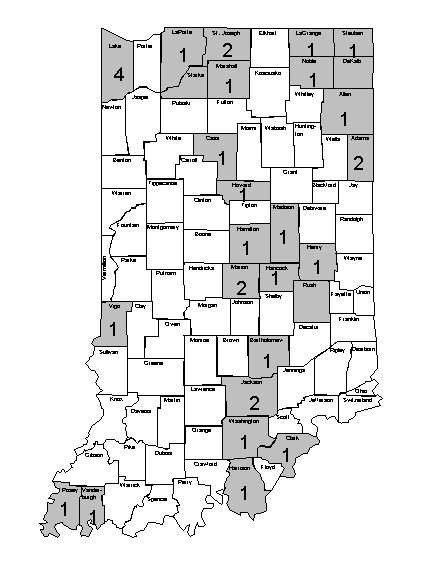
[an error occurred while processing this directive]